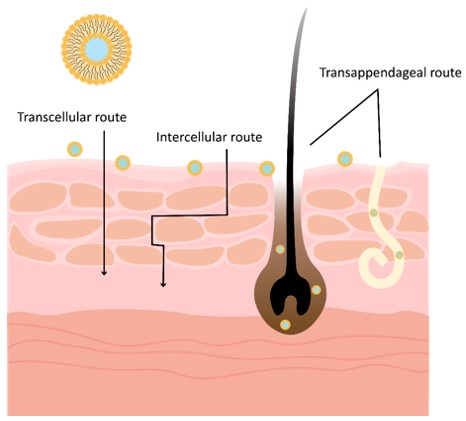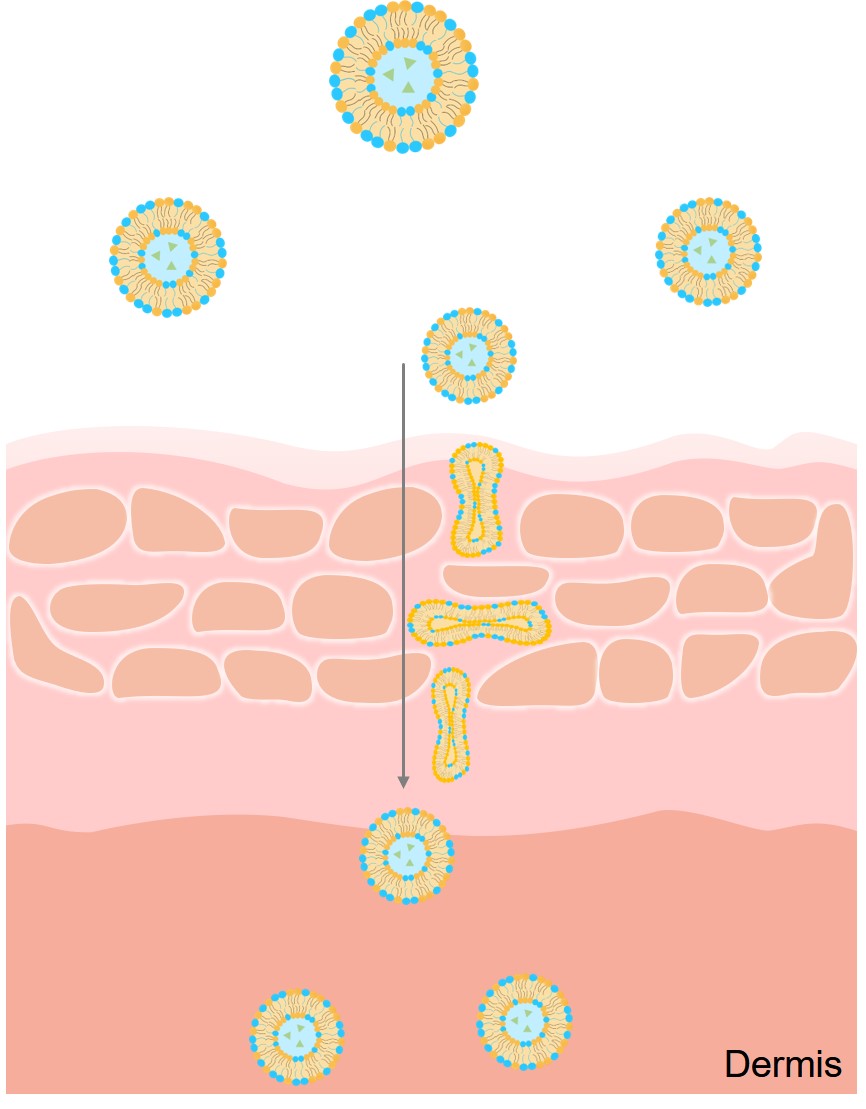Liposomes for Cosmetics
Many cosmetics are rendered ineffective due to the epidermal barrier, which is mostly composed of the stratum corneum (SC). The SC, made up of flattened stratum corneum cells, keeps the body healthy and functioning optimally by limiting the entry of harmful substances and the loss of water. As a result, it is difficult for cosmetic active substances to permeate the SC and exert their effects when applied to the skin. The barrier effect of the SC can be bypassed with the use of nanocarriers, allowing cosmetic active substances to be transported deep into the skin.
Liposomes for Cosmetics
Liposomes are spherical vesicles with a lipid bilayer structure that encapsulate hydrophobic or hydrophilic substances. Because of their similar composition to the SC layer, liposomes can be utilized as carriers for transdermal delivery of cosmetic active substances, reducing the risk of skin irritation and allergic responses. Currently, a large number of cosmetic companies have introduced liposomal cosmetics that can be adapted to a variety of situations, such as body lotions, eye creams, and face washes.
Liposomes can deliver the active substances deep into the skin via three routes: transcellular, intercellular, and transappendageal route.
 Fig 1. Three transdermal delivery routes for liposomes.
Fig 1. Three transdermal delivery routes for liposomes.
Liposomes for skin applications
Flexible liposomes can penetrate the SC layer by changing their shape and passing through narrow intercellular gaps. Based on our professional R&D team and technology platform, Creative Biolabs can provide you with comprehensive development services for flexible liposomes, including Ethosomes, Transfersome, Transethosomes, etc.
 Fig 2. Mechanism of transdermal delivery of flexible liposomes.
Fig 2. Mechanism of transdermal delivery of flexible liposomes.
Ethosomes are lipid vesicles made up of phospholipids, ethanol, and water, with an ethanol concentration of around 20%-45%. The high concentration of ethanol endows ethosomes with soft and flexible properties. Based on the presence of ethanol, ethosomes are efficient in reducing SC's barrier effect, allowing active substances to permeate and distribute within the skin.
Transfersomes are lipid vesicles made of phospholipids, surfactants, and water. Surfactants lower vesicle surface tension, allowing transfersomes to pass through intercellular gaps at 1/10-1/5 the size of their particles. The hydrophile-lipophile balance number (HLB) of the surfactant, as well as the surfactant-to-phospholipid ratio, alter transfersomes' transdermal function. Creative Biolabs can tailor transfersomes to your specific project requirements.
Transethosomes are lipid vesicles that combine the properties of ethosomes and transfersomes. They consist of up to 30% ethanol, nonionic surfactants, phospholipids, and water. Transethosomes outperform ethosomes and transfersomes in terms of elasticity, skin penetration, and permeation.
Creative Biolabs can supply surface-modified liposomes for better skin permeability and targeted delivery of cosmetic active substances. Please trust us, it is our common goal to assist you in promoting the development of your cosmetic program.

For Research Use Only. Not For Clinical Use

 Fig 1. Three transdermal delivery routes for liposomes.
Fig 1. Three transdermal delivery routes for liposomes.
 Fig 2. Mechanism of transdermal delivery of flexible liposomes.
Fig 2. Mechanism of transdermal delivery of flexible liposomes.
 For Research Use Only. Not For Clinical Use
For Research Use Only. Not For Clinical Use
